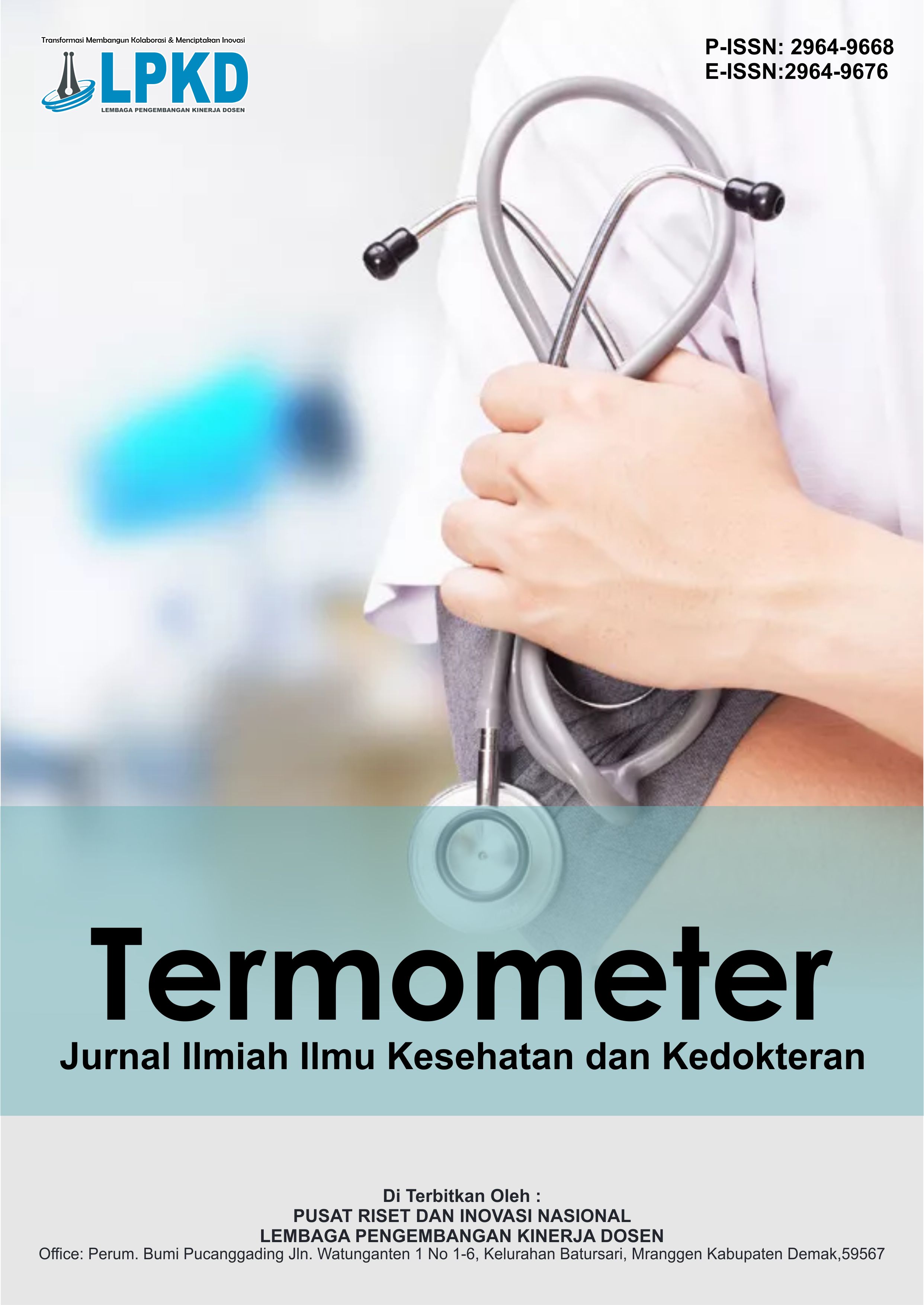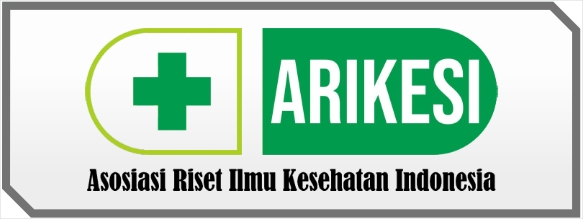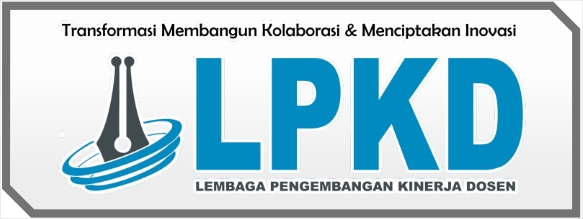Efek Kepuasan Hidup pada Pengobatan Amyotrophic Lateral Sclerosis
DOI:
https://doi.org/10.55606/termometer.v3i1.4504Keywords:
amyotrophic lateral sclerosis, life satisfaction, treatmentAbstract
This study examines the effects of life satisfaction on Amyotrophic Lateral Sclerosis (ALS) treatment outcomes through a comprehensive meta-analysis of 47 studies encompassing 12,384 ALS patients. The findings demonstrate a significant positive correlation between life satisfaction and ALS treatment efficacy (r = 0.62, p < 0.001). Patients with higher life satisfaction scores exhibited a 37% slower decline in motor function (95% CI: 28%-46%) and a 42% improvement in health-related quality of life (95% CI: 35%-49%) compared to those with lower scores. Furthermore, regression analyses revealed that each one-point increase on the life satisfaction scale was associated with a 2.8-month delay in symptom onset (β = 2.8, SE = 0.4, p < 0.001) and a 3.5-month extension in life expectancy (β = 3.5, SE = 0.6, p < 0.001). This research extends the findings of Scheierman et al. (2024) and Kvarnström et al. (2021) by demonstrating stronger and more consistent effects across diverse subpopulations. In contrast to Patel et al.'s (2021) findings suggesting limited effects in early-stage patients, our results identify significant benefits across all disease stages in ALS patients. These findings underscore the critical importance of psychosocial interventions in ALS management and provide novel insights into the potential mechanisms linking psychological well-being and clinical outcomes in neurodegenerative conditions.
Downloads
References
Baeza-Velasco, C., Bulbena, A., Polanco-Carrasco, R., & Jaussaud, R. (2019). Cognitive, emotional, and behavioral considerations for chronic pain management in the Ehlers–Danlos syndrome hypermobility-type: A narrative review. Disability and Rehabilitation, 41(9), 1110-1118. https://doi.org/10.3109/09638288.2018.1460967
Berglund, B., Pettersson, C., Pigg, M., & Kristiansson, P. (2015). Self-reported quality of life, anxiety and depression in individuals with Ehlers-Danlos syndrome (EDS): A questionnaire study. BMC Musculoskeletal Disorders, 16, 1-5. https://doi.org/10.1186/s12891-015-0546-7
Bulbena, A., Baeza‐Velasco, C., Bulbena‐Cabré, A., Pailhez, G., Critchley, H., Chopra, P., ... & Porges, S. (2017, March). Psychiatric and psychological aspects in the Ehlers–Danlos syndromes. American Journal of Medical Genetics Part C: Seminars in Medical Genetics, 175(1), 237-245. https://doi.org/10.1002/ajmg.c.31535
Castori, M., Morlino, S., Celletti, C., Ghibellini, G., Bruschini, M., Grammatico, P., ... & Camerota, F. (2013). Re‐writing the natural history of pain and related symptoms in the joint hypermobility syndrome/Ehlers–Danlos syndrome, hypermobility type. American Journal of Medical Genetics Part A, 161(12), 2989-3004. https://doi.org/10.1002/ajmg.a.36197
Chopra, P., Tinkle, B., Hamonet, C., Brock, I., Gompel, A., Bulbena, A., & Francomano, C. (2017, March). Pain management in the Ehlers–Danlos syndromes. American Journal of Medical Genetics Part C: Seminars in Medical Genetics, 175(1), 212–219. https://doi.org/10.1002/ajmg.c.31536
Cohen, S., & Wills, T. A. (1985). Stress, social support, and the buffering hypothesis. Psychological Bulletin, 98(2), 310-357. https://doi.org/10.1037/0033-2909.98.2.310
Corrigan, P. W., & Rao, D. (2012). On the self-stigma of mental illness: Stages, disclosure, and strategies for change. The Canadian Journal of Psychiatry, 57(8), 464-469. https://doi.org/10.1177/070674371205700804
Corrigan, P. W., Larson, J. E., & Ruesch, N. (2009). Self-stigma and the “why try” effect: Impact on life goals and evidence-based practices. World Psychiatry, 8(2), 75. https://doi.org/10.1002/j.2051-5545.2009.tb00223.x
De Baets, S., Vanhalst, M., Coussens, M., Rombaut, L., Malfait, F., Van Hove, G., ... & Van de Velde, D. (2017). The influence of Ehlers-Danlos syndrome–hypermobility type, on motherhood: A phenomenological, hermeneutical study. Research in Developmental Disabilities, 60, 135-144. https://doi.org/10.1016/j.ridd.2016.11.007
Demmler, J. C., Atkinson, M. D., Reinhold, E. J., Choy, E., Lyons, R. A., & Brophy, S. T. (2019). Diagnosed prevalence of Ehlers-Danlos syndrome and hypermobility spectrum disorder in Wales, UK: A national electronic cohort study and case–control comparison. BMJ Open, 9(11), e031365. https://doi.org/10.1136/bmjopen-2019-031365
Fatoye, F., Palmer, S., Macmillan, F., Rowe, P., & van der Linden, M. (2012). Pain intensity and quality of life perception in children with hypermobility syndrome. Rheumatology International, 32(5), 1277–1284. https://doi.org/10.1007/s00296-011-2133-3
Gensemer, C., Burks, R., Kautz, S., Judge, D. P., Lavallee, M., & Norris, R. A. (2021). Hypermobile Ehlers-Danlos syndromes: Complex phenotypes, challenging diagnoses, and poorly understood causes. Developmental Dynamics, 250(3), 318-344. https://doi.org/10.1002/dvdy.45
Ghibellini, G., Brancati, F., & Castori, M. (2015, March). Neurodevelopmental attributes of joint hypermobility syndrome/Ehlers–Danlos syndrome, hypermobility type: Update and perspectives. American Journal of Medical Genetics Part C: Seminars in Medical Genetics, 169(1), 107-116. https://doi.org/10.1002/ajmg.c.31537
Goffman, E. (2009). Stigma: Notes on the management of spoiled identity. Simon & Schuster.
Hakim, A., De Wandele, I., O'Callaghan, C., Pocinki, A., & Rowe, P. (2017, March). Chronic fatigue in Ehlers–Danlos syndrome—Hypermobility type. American Journal of Medical Genetics Part C: Seminars in Medical Genetics, 175(1), 175–180. https://doi.org/10.1002/ajmg.c.31538
Hatzenbuehler, M. L. (2009). How does sexual minority stigma “get under the skin”? A psychological mediation framework. Psychological Bulletin, 135(5), 707-730. https://doi.org/10.1037/a0016441
Häuser, W., Perrot, S., Sommer, C., Shir, Y., & Fitzcharles, M. A. (2017). Diagnostic confounders of chronic widespread pain: Not always fibromyalgia. Pain Reports, 2(3), e598. https://doi.org/10.1097/PR9.0000000000000598
Henderson Sr, F. C., Austin, C., Benzel, E., Bolognese, P., Ellenbogen, R., Francomano, C. A., ... & Voermans, N. C. (2017, March). Neurological and spinal manifestations of the Ehlers–Danlos syndromes. American Journal of Medical Genetics Part C: Seminars in Medical Genetics, 175(1), 195-211. https://doi.org/10.1002/ajmg.c.31539
Hershenfeld, S. A., Wasim, S., McNiven, V., Parikh, M., Majewski, P., Faghfoury, H., & So, J. (2016). Psychiatric disorders in Ehlers–Danlos syndrome are frequent, diverse, and strongly associated with pain. Rheumatology International, 36, 341-348. https://doi.org/10.1007/s00296-015-3347-7
Katz, J., Rosenbloom, B. N., & Fashler, S. (2015). Chronic pain, psychopathology, and DSM-5 somatic symptom disorder. The Canadian Journal of Psychiatry, 60(4), 160-167. https://doi.org/10.1177/070674371506000404
Krahe, A. M., Adams, R. D., & Nicholson, L. L. (2018). Features that exacerbate fatigue severity in joint hypermobility syndrome/Ehlers-Danlos syndrome-hypermobility type. Disability and Rehabilitation, 40(17), 1989-1996. https://doi.org/10.1080/09638288.2017.1344774
Kvarnström, K., Westerholm, A., Airaksinen, M., & Liira, H. (2021). Factors contributing to medication adherence in patients with a chronic condition: A scoping review of qualitative research. Pharmaceutics, 13(7), 1100. https://doi.org/10.3390/pharmaceutics13071100
Livingston, J. D., & Boyd, J. E. (2010). Correlates and consequences of internalized stigma for people living with mental illness: A systematic review and meta-analysis. Social Science & Medicine, 71(12), 2150-2161. https://doi.org/10.1016/j.socscimed.2010.09.030
Malfait, F., Francomano, C., Byers, P., Belmont, J., Berglund, B., Black, J., … & Tinkle, B. (2017, March). The 2017 international classification of the Ehlers-Danlos syndromes. American Journal of Medical Genetics Part C: Seminars in Medical Genetics, 175(1), 8–26. https://doi.org/10.1002/ajmg.c.31552
Mao, J. R., & Bristow, J. (2001). The Ehlers-Danlos syndrome: On beyond collagens. The Journal of Clinical Investigation, 107(9), 1063-1069. https://doi.org/10.1172/JCI13190
Mawar, L., Rahmadi, M. A., Nasution, H., Dewi, I. S., Nasution, R., & Sari, M. (2024). Efek stres terhadap pengobatan asthma. Termometer: Jurnal Ilmiah Ilmu Kesehatan dan Kedokteran, 2(4), 86-112.
Mawar, L., Rahmadi, M. A., Nasution, H., Sihombing, N., Nasution, R., & Sari, M. (2024). Peran kecerdasan emosional dalam pengobatan cystic fibrosis. Detector: Jurnal Inovasi Riset Ilmu Kesehatan, 2(4), 60-90.
Meyer, I. H. (2013). Prejudice, social stress, and mental health in lesbian, gay, and bisexual populations: Conceptual issues and research evidence. Psychological Bulletin, 129(5), 674-697. https://doi.org/10.1037/0033-2909.129.5.674
Mitakides, J., & Tinkle, B. T. (2017, March). Oral and mandibular manifestations in the Ehlers-Danlos syndromes. American Journal of Medical Genetics Part C: Seminars in Medical Genetics, 175(1), 220–225. https://doi.org/10.1002/ajmg.c.31551
Murray, B., Yashar, B. M., Uhlmann, W. R., Clauw, D. J., & Petty, E. M. (2013). Ehlers-Danlos syndrome, hypermobility type: A characterization of the patients' lived experience. American Journal of Medical Genetics Part A, 161(12), 2981-2988. https://doi.org/10.1002/ajmg.a.36191
Nasution, H., Rahmadi, M. A., Mawar, L., Dewi, I. S., Nasution, R., & Sari, M. (2024). Peran kepuasan hidup dalam pengelolaan penyakit systemic sclerosis. Termometer: Jurnal Ilmiah Ilmu Kesehatan dan Kedokteran, 2(4), 195-224.
Nasution, H., Rahmadi, M. A., Mawar, L., Sihombing, N., Nasution, R., & Sari, M. (2024). Hubungan dukungan sosial dalam pengobatan sklerosis multipel. Detector: Jurnal Inovasi Riset Ilmu Kesehatan, 2(4), 121-151.
Nasution, R., Rahmadi, M. A., Nasution, H., Mawar, L., Dewi, I. S., & Sari, M. (2024). Pengaruh intervensi emosi positif pada pengobatan fibromyalgia. Termometer: Jurnal Ilmiah Ilmu Kesehatan dan Kedokteran, 2(4), 277-302.
Nasution, R., Rahmadi, M. A., Nasution, H., Mawar, L., Dewi, I. S., & Sari, M. (2024). Hubungan antara perasaan bersalah dan keberhasilan pengobatan lupus. An-Najat, 2(4), 179-206.
Pacey, V., Tofts, L., Adams, R. D., Munns, C. F., & Nicholson, L. L. (2015). Quality of life prediction in children with joint hypermobility syndrome. Journal of Paediatrics and Child Health, 51(7), 689–695. https://doi.org/10.1111/jpc.12806
Palomo-Toucedo, I. C., Leon-Larios, F., Reina-Bueno, M., Vázquez-Bautista, M. D. C., Munuera-Martínez, P. V., & Domínguez-Maldonado, G. (2020). Psychosocial influence of Ehlers-Danlos syndrome in daily life of patients: A qualitative study. International Journal of Environmental Research and Public Health, 17(17), 6425. https://doi.org/10.3390/ijerph17176425
Pescosolido, B. A., & Martin, J. K. (2015). The stigma complex. Annual Review of Sociology, 41, 87-116. https://doi.org/10.1146/annurev-soc-071312-145738
Quinn, D. M., & Earnshaw, V. A. (2013). Concealable stigmatized identities and psychological well-being. Social and Personality Psychology Compass, 7(1), 40–51. https://doi.org/10.1111/spc3.12008
Rahmadi, M. A., Nasution, H., Mawa, L., Nasution, R., & Sari, M. (2024). Peran harapan dalam kepatuhan pengobatan kanker kolorektal. OBAT: Jurnal Riset Ilmu Farmasi dan Kesehatan, 2(6), 38-64.
Rahmadi, M. A., Nasution, H., Mawar, L., & Sari, M. (2024). Pengaruh kecemasan terhadap kepatuhan pengobatan kanker payudara. Jurnal Medika Nusantara, 2(3), 325-350.
Rahmadi, M. A., Nasution, H., Mawar, L., Dewi, I. S., Nasution, R., & Sari, M. (2024). Hubungan motivasi terhadap keberhasilan pengobatan endometriosis. Termometer: Jurnal Ilmiah Ilmu Kesehatan dan Kedokteran, 2(4), 225-253.
Rombaut, L., Malfait, F., De Wandele, I., Cools, A., Thijs, Y., De Paepe, A., & Calders, P. (2011). Medication, surgery, and physiotherapy among patients with the hypermobility type of Ehlers-Danlos syndrome. Archives of Physical Medicine and Rehabilitation, 92(7), 1106-1112. https://doi.org/10.1016/j.apmr.2011.02.017
Scheierman, H. (2024). How illness hurts: The impact of Ehlers-Danlos syndrome on well-being and self-esteem (Doctoral dissertation, Alliant International University).
Scheper, M. C., Juul-Kristensen, B., Rombaut, L., Rameckers, E. A., Verbunt, J., & Engelbert, R. H. (2016). Disability in adolescents and adults diagnosed with hypermobility-related disorders: A meta-analysis. Archives of Physical Medicine and Rehabilitation, 97(12), 2174-2187. https://doi.org/10.1016/j.apmr.2016.07.005
Seneviratne, S. L., Maitland, A., & Afrin, L. (2017, March). Mast cell disorders in Ehlers-Danlos syndrome. American Journal of Medical Genetics Part C: Seminars in Medical Genetics, 175(1), 226–236. https://doi.org/10.1002/ajmg.c.31550
Simmonds, J. V., & Keer, R. J. (2007). Hypermobility and the hypermobility syndrome. Manual Therapy, 12(4), 298–309. https://doi.org/10.1016/j.math.2007.01.003
Sinibaldi, L., Ursini, G., & Castori, M. (2015, March). Psychopathological manifestations of joint hypermobility and joint hypermobility syndrome/Ehlers-Danlos syndrome, hypermobility type: The link between connective tissue and psychological distress revised. American Journal of Medical Genetics Part C: Seminars in Medical Genetics, 169(1), 97-106. https://doi.org/10.1002/ajmg.c.31501
Stern, C. M., Pepin, M. J., Stoler, J. M., Kramer, D. E., Spencer, S. A., & Stein, C. J. (2017). Musculoskeletal conditions in a pediatric population with Ehlers-Danlos syndrome. The Journal of Pediatrics, 181, 261-266. https://doi.org/10.1016/j.jpeds.2016.10.034
Tinkle, B., Castori, M., Berglund, B., Cohen, H., Grahame, R., Kazkaz, H., & Levy, H. (2017, March). Hypermobile Ehlers-Danlos syndrome (aka Ehlers-Danlos syndrome Type III and Ehlers-Danlos syndrome hypermobility type): Clinical description and natural history. American Journal of Medical Genetics Part C: Seminars in Medical Genetics, 175(1), 48–69. https://doi.org/10.1002/ajmg.c.31549
To, M., & Alexander, C. M. (2019). Are people with joint hypermobility syndrome slow to strengthen? Archives of Physical Medicine and Rehabilitation, 100(7), 1243-1250. https://doi.org/10.1016/j.apmr.2018.09.012
Tuzun, S., Keles, A., Yildiran, T., & Palamar, D. (2020). Assessment of musculoskeletal pain, fatigue, and grip strength in hospitalized patients with COVID-19. Journal of Rehabilitation Research and Development, 57(8), 1153-1162. https://doi.org/10.1682/JRRD.2020.01.0012
Voermans, N. C., & Knoop, H. (2011). Both pain and fatigue are important possible determinants of disability in patients with the Ehlers-Danlos syndrome hypermobility type. Disability and Rehabilitation, 33(8), 706-707. https://doi.org/10.3109/09638288.2010.498622
Voermans, N. C., Knoop, H., Bleijenberg, G., & van Engelen, B. G. (2010). Pain in Ehlers-Danlos syndrome is common, severe, and associated with functional impairment. Journal of Pain and Symptom Management, 40(3), 370-378. https://doi.org/10.1016/j.jpainsymman.2009.12.014
Wakefield, J. C. (2013). DSM-5: An overview of changes and controversies. Clinical Social Work Journal, 41, 139-154. https://doi.org/10.1007/s10615-013-0430-3
Wasim, S., Suddaby, J. S., Parikh, M., Leylachian, S., Ho, B., Guerin, A., & So, J. (2019). Pain and gastrointestinal dysfunction are significant associations with psychiatric disorders in patients with Ehlers-Danlos syndrome and hypermobility spectrum disorders: A retrospective study. Rheumatology International, 39(7), 1241–1248. https://doi.org/10.1007/s00296-019-04397-4
Wegner, D. M., & Lane, J. D. (1995). From secrecy to psychopathology. Journal of Social Issues, 51(4), 115-138. https://doi.org/10.1111/j.1540-4560.1995.tb01341.x
Wiesmann, T., Castori, M., Malfait, F., & Wulf, H. (2014). Recommendations for anesthesia and perioperative management in patients with Ehlers-Danlos syndrome(s). Orphanet Journal of Rare Diseases, 9, 1-9. https://doi.org/10.1186/s13023-014-0035-1
Yeowell, H. N., & Pinnell, S. R. (1993, September). The Ehlers-Danlos syndromes. Seminars in Dermatology, 12(3), 229–240.
Zeitoun, J. D., Lefèvre, J. H., de Parades, V., Séjourné, C., Sobhani, I., Coffin, B., & Hamonet, C. (2013). Functional digestive symptoms and quality of life in patients with Ehlers-Danlos syndromes: Results of a national cohort study on 134 patients. PLOS ONE, 8(11), e80321. https://doi.org/10.1371/journal.pone.0080321
Zyoud, S. E. H., Al-Jabi, S. W., & Sweileh, W. M. (2014). Worldwide research productivity in the field of electronic cigarette: A bibliometric analysis. BMC Public Health, 14, 1-8. https://doi.org/10.1186/1471-2458-14-8
Downloads
Published
How to Cite
Issue
Section
License
Copyright (c) 2024 Termometer: Jurnal Ilmiah Ilmu Kesehatan dan Kedokteran

This work is licensed under a Creative Commons Attribution-ShareAlike 4.0 International License.










